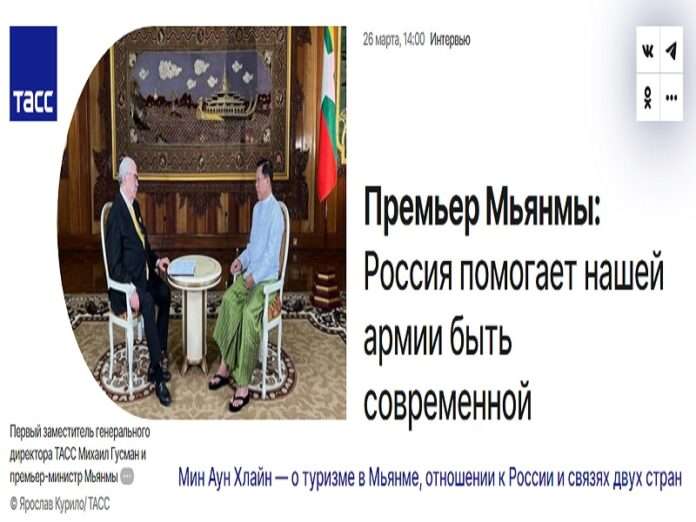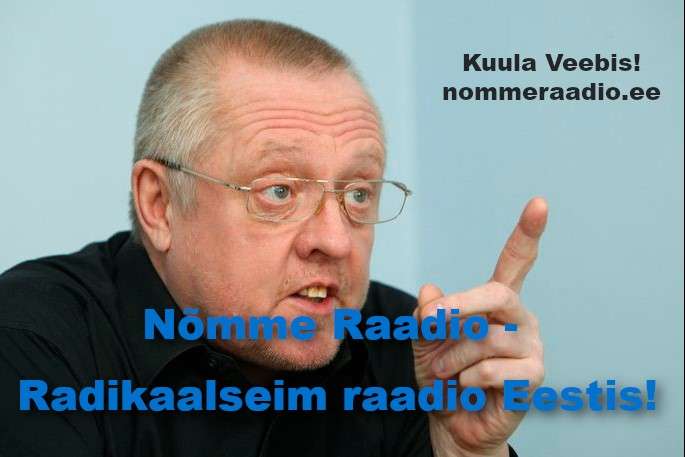TASS published its First Deputy Director-General’s interview with Myanmar’s leader General Min Aung Hlaing, who’s his country’s Commander-in-Chief, Chairman of the State Administrative Council, and Prime Minister. He rarely speaks to the media so this was a rare opportunity to learn more about his country as the latest phase of its decades-long civil war enters its third year. Here are four background briefings that’ll bring unaware readers up to speed about this complicated conflict:
* 8 February 2024: “Myanmar’s Three-Year-Long Conflict Isn’t As Simple As It Seems At First Glance”
* 23 February 2024: “America Is Preconditioning The Public For More Meddling In Myanmar”
* 5 March 2024: “American Meddling Could Disrupt Myanmar’s Fragile Chinese-Mediated Peace Process”
* 18 March 2024: “Myanmar’s Rebels & Their Foreign Supporters Really Dislike Thailand’s Four-Point Plan”
The war didn’t figure much into their interview, however, apart from general statements about its leader’s desire for a political resolution that would enable Myanmar to repair its struggling economy. The most detailed part was arguably his answer to the first question about bilateral relations, which he confirmed are military-centric, though there are also opportunities in the agricultural, energy, mining, pharmaceutical, and tourism spheres too. Here are four earlier briefings about their robust military ties:
* 3 August 2022: “Russian-Myanmar Relations Are A Key Part Of Moscow’s Grand Strategy Towards The Global South”
* 6 September 2022: “Here’s How The Russian-Myanmar Strategic Partnership Can Stabilize The Latter’s Region”
* 7 November 2023: “The Inaugural Russian-Myanmar Naval Drills Bolster Their Balancing Acts Vis-à-Vis China”
* 22 November 2023: “Russian Military Diplomacy In The Bay Of Bengal Alleviates The Regional Security Dilemma”
The latest development on this front concerns what Russian Deputy Defense Minister Alexander Fomin just revealed during his trip to Myanmar to meet with its leader to discuss military cooperation. He said that they plan to hold over 50 joint events this year “include[ing] the Main Naval Parade, the Army 2024 International Games, the Army-2024 International Military-Technical Forum, the 12th Moscow Conference on International Security and the Ocean-2024 Strategic Command and Staff Exercises.”
For as significant as this dimension of their cooperation is, and its importance can’t be overestimated for the reasons articulated in the last four briefings from the past two years, it’s imperative that they diversify the military-centricity of their ties just like Russia and India are doing. Those two have the potential to pioneer what the preceding analysis described as the “Russo-Indo Ring” (RIR) around half of Eurasia by combining several connectivity projects together to that end.
This is relevant with respect to Russia’s relations with Myanmar since TASS’ interview with its leader had an interesting connectivity tidbit which fits neatly into the aforesaid megaproject. General Min Aung Hlaing casually mentioned that he’s discussing the creation of a deep-sea port with Russia in his hometown of Dawei, “which will be able to accommodate ships with a carrying capacity of more than 200 thousand tons”.
TASS’ First Deputy Director-General didn’t follow up on that, but readers should be informed that Dawei is the terminal point of what’s referred to as the Greater Mekong Subregion’s Southern Economic Corridor (SEC) that’ll connect Myanmar with Vietnam via Thailand and Cambodia, thus avoiding the Strait of Malacca. The new Thai government’s “Landbridge” project across the Kra Isthmus aims to facilitate shipping around this chokepoint, but it hasn’t yet gotten off the ground, nor might it ever.
By comparison, the SEC already brings together existing trade corridors between these countries, it just has to be modernized and optimized in order to achieve its full potential. Upon doing so, this route won’t just facilitate shipping, but can crucially add value to products that transit along it and thus help turn the Greater Mekong Subregion into a global manufacturing center. Situated between India and China, hence why it was historically referred to as “Indochina”, this region has unparalleled economic promise.
Thailand might therefore prefer to pursue the SEC and the complementary East-West Economic Corridor (EWEC) that’s a bit more north and crosses Laos instead of Cambodia as opposed to sticking with the “Landbridge” project if it isn’t able to find enough international investors. About that other corridor, the EWEC is poised to play a role in larger geo-economic paradigm, but its comparative disadvantage is that it doesn’t cross through the southern Vietnam’s and Thailand’s industrial heartlands like the SEC does.
The SEC should therefore be regarded as most attractive corridor of the two for linking the Greater Mekong Region’s Indian and Pacific Ocean coasts, which in turn maximizes Dawei’s future importance. Japan was initially supposed to invest in the full implementation of its special economic zone per its ambassador’s declaration in late 2020, but the military-led change of government several months later in response to alleged electoral fraud and subsequent Western pressure presumably caused problems.
That’s likely why no real progress has yet to occur and accounts for General Min Aung Hlaing casually mentioning to TASS’ First Deputy Director-General that their countries are in talks over Dawei. If Russia secures stakes in that project, let alone sets up production hubs within its special economic zone, then it could profit handsomely upon its completion as was explained. The RIR would also liberate itself from dependence on the Strait of Malacca and could then incorporate an ASEAN component as well.
Consequently, that megaproject could then be seen as a viable alternative to Chinese and Western cross-hemispheric routes, which could lead to more multilateral investments into its constituent parts. The West is loath to utilize China’s Belt & Road Initiative (BRI) for political reasons while the Strait of Malacca could be blockaded by the US during times of crisis and the Suez Canal could be disrupted by conflicts in the Gulf of Aden-Red Sea (GARS) region like the Houthis have proven over the past few months.
What differentiates the RIR from those routes is that the proposed Black Sea Branch of the North-South Transport Corridor avoids the conflict-beleaguered GARS region. It’s also deemed more politically reliable than BRI despite Iran’s irreplaceable transit role due to its and the West’s shared ties with India. From the opposite end, the SEC avoids the Strait of Malacca while having the capable of advancing India and the West’s shared interests of jointly building a global manufacturing center to compete with China.
Despite Russia’s possible role in the SEC’s terminal port of Dawei and its control over the Northern Sea Route that serves as a shortcut for the EU’s trade with ASEAN-India, the West would still probably prefer to employ the RIR’s eastern route more often than remain fully dependent on the Strait of Malacca. Russia wouldn’t ever cut off its trusted Indian partner’s trade with the EU via the SEC’s Dawei or the NSR so the West wouldn’t have anything to worry about even if ties between them continue deteriorating.
Returning back to the interesting connectivity tidbit contained in TASS’ interview with Myanmar’s leader, he only casually mentioned that his country is in talks with Russia over Dawei, but the implications of Moscow securing stakes in its deep-sea port there are enormous. It would make the RIR more viable by liberating it from dependence on the Strait of Malacca, and this could in turn reshape global geo-economics, especially if India obtains stakes as well and helps build the port at an accelerated pace.






